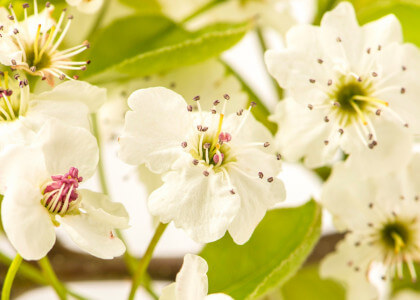Here at McKay, sustainability is part of our foundation, and concern for our environment runs through everything we do. Our appreciation of native plants is part of that. We’ve been growing natives and using them in landscapes since the nursery began in 1897 – and you can expect us keep on growing and designing with natives in the years ahead.
1. Choose native plants well-suited to your region. Properly sited, plants that are native to your area or very similar growing zones need less maintenance and less supplemental water than non-native plants. A heat-tolerant native prairie grass such as graceful, finely textured Prairie Dropseed naturally thrives in Midwest landscapes with minimal care and little or no irrigation.
2. Don’t limit native plants to informal designs. If prairie- or meadow-like plantings are your style, go for it. Natives shine in naturalized, informal design. But native plants also excel in more formal landscape designs. A native perennial such as Blue False Indigo makes a dramatic addition to perennial beds and mixed borders with its striking purple-blue flowers, gray-green foliage and ornamental seed pods.
3. Capitalize on native plant strengths. By matching native plants to conditions that mimic their native habitats, you benefit from their natural strengths. A native shrub such as Redosier Dogwood naturally occurs in areas where seasonal moisture levels fluctuate between extremes. It’s an excellent choice for rain gardens designed to capture runoff during heavy rainfalls, but it handles periods of dryness well, too.
4. Celebrate native connections with wildlife. Native plants have symbiotic relationships with native insects and other wildlife, including animals and birds. Plant a native shrub such as American Cranberrybush Viburnum, and you provide a flowery food source for late-spring pollinators, nesting spots and shelter for songbirds, and persistent fruit that feeds birds and other wildlife during fall and winter.
By enriching your landscape and gardens with native plants like these and more, you invest in the future and help support a better tomorrow. Shop our plants online for in-store pickup, local truck delivery, or FedEx delivery anywhere in the continental United States. Need a hand in beautifying your world with native plants? You can Find a Design Pro here.








